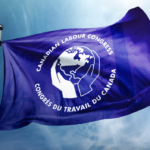
Real initiatives – Green Homes and Green Buildings
Canada is cold in the winter and only 10 per cent of our buildings are energy efficient. Green Homes and Green Buildings is about making what we have as efficient as possible, while cutting greenhouse gas emissions that cause climate change. Improving energy efficiency is a clean, inexpensive and prudent step that can pay for itself over the long term.
Can we take on this challenge? Of course we can!
A green economy is more than an idea. There are lots of examples of energy efficiency, green homes and green buildings all over the world. Improved energy efficiency is also a proven way to create jobs. In fact, a $1.1 billion dollar homes and buildings retrofit public program could be designed to leverage $50 billion dollars in private expenditures, and that’s enough to create one million person job years of employmenti. Not only would such a program create jobs it would reduce greenhouse gas emissions by 10 million tonnes by 2020 and leave Canadians with more efficient homes and buildings, which saves us money too.
There is no question – we need green homes and buildings so we can reduce our reliance on fossil fuels to ensure that the future needs of Canadians are met while ensuring both jobs for today and a clean planet for tomorrow.
Real initiatives in Canada and elsewhere
High Rise, Low Bill, Toronto, ON
Toronto’s TowerWise program is focused on improving the energy efficiency of residential high-rise buildings. A 30-year old condominium at 15 Kensington in Brampton cut its natural gas use by 28 per cent, water use by 29 per cent and electricity use for cooling by 50 per cent. The building is now saving $65,000 per year on utility costs and will have recovered its upfront costs in under five years.
A 128-unit rental apartment building at 24 Manor Road, constructed in 1970, had upgrades, including low-e argon filled windows and insulated balcony doors and a new roof. An 84 collector solar water heating system was also added to the roof. The building is saving more than $33,300 per year in utility costs and the payback, when increased rental income is included, is three years.
A new condominium, Appleby Woods, was constructed with high levels of insulation, sensor controlled fans and lighting as well as advanced features including a geo-exchange heating and cooling system but still cost 25 per cent less to build than similar buildings and costs 60 per cent less to operate.
Toronto Atmospheric Fund – TAF
After selling a long unused farm at a city jail in Richmond Hill, the City of Toronto invested in its future by establishing the Toronto Atmospheric Fund. Since 1991, TAF has been helping the City of Toronto meet its greenhouse gas emissions reductions targets by investing more than $50 million in local climate solutions, saving the City of Toronto more than $55 million on its energy bills.
TAF has helped the City with energy efficiency with the following:
- Co-funding energy retrofits in more than 100 City buildings in cooperation with Toronto’s Facilities Management Division.
- Providing funding and expertise for energy efficiency and renewable power projects at Exhibition Place, the Toronto Zoo, Harbourfront Centre, Toronto Community Housing, community centres and seniors’ residences.
- Structuring a leasing arrangement that allowed Toronto Community Housing to purchase thousands of energy-efficient appliances, saving $10 million,
- Green$aver, which piloted the concept of incentives for home energy retrofits that have been accessed by over 36,000 Toronto residents, who have saved an average of 21% on their home energy bills.
BUILD: the ecological way forward to greather social inclusion
In Manitoba, BUILD (Building Unrban Industries for Local Development) is pioneering a job-training program that brings together equity, economics and the environment. Following a social enterprise model, BUILD trains First Nations workers in both their communities and in Winnipeg’s inner city for good climate-friendly jobs. Affiliated with BUILD, Aki Energy has trained First Nations men and women in the Peguis and Fisher Rivber communities for jobs installing geothermal heating in loval homes and public buildings. To date, more than 100 geothermal ystems have been installed. Plans are in the works to expand this social enterprise model to three additional First Nations communities in Manitoba and to put in place another 250 geothermal installations. Manitoba Hydro predicts $157 million in savings by 2017 for the implicated communities. In Winnipeg’s inner city, young marginalized workers – many of whom are Aboriginal – have been trained and are currently upgrading insulation, plumbing and ground water heat recovery in neighbourhood homes. So far, 8,000 units have been retrofitted with enerty efficient plumbing and groundwater upgrades and 1,000 units have undergone energy retrofits.
Greening Municipal Buildings in Belledune
The village of Belledune, New Brunswick has completed energy audits on its five municipal facilities with help from Enerplan consultants.
The work is now completed and the village expects energy savings to be approximately $29,000/year. This decreased energy use will also reduce greenhouse gas emissions generated by these facilities by about 167 tonnes or the equivalent of taking 28 passenger vehicles off the road for a year.
Greening Municipal Buildings Through a local carbon Tax in Dawson Creek, B.C.
Dawson Creek will contribute $100 to the City’s newly created Carbon Fund for each and every tonne of greenhouse gas emissions the city produces from its own operations.
The fund will do three things:
- Encourage Dawson Creek to invest in low-carbon projects.
- The extra cost of each tonne of emissions will make energy efficient projects more cost-effective.
- The money in the carbon fund will be used to reduce emissions like improving the energy efficiency of Dawson Creek’s municipal vehicle fleet, or installing biomass heating or solar hot water systems on municipal facilities could all qualify for funding from the Carbon Fund.



